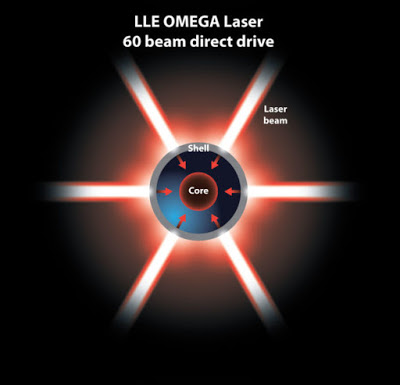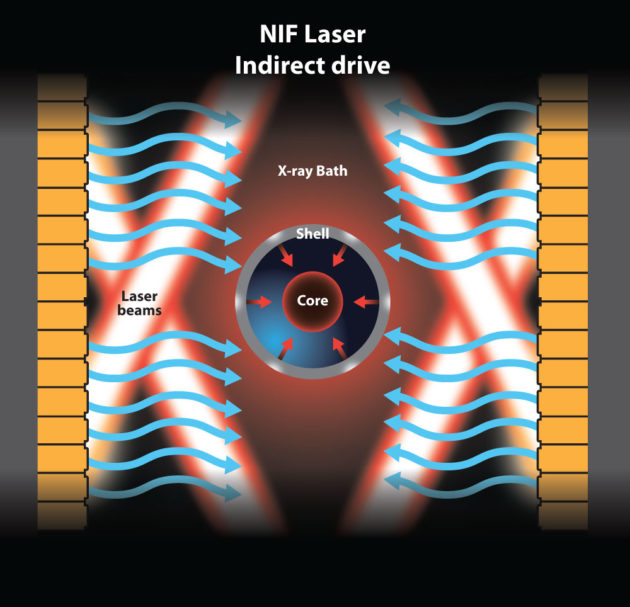
Laser Fusion

Nuclear fusion is one of the Holy Grails of energy research. However, developments in this particular field have been more like baby steps rather than great strides.
But now, one study is significantly accelerating our (unfortunately) small steps towards nuclear fusion. Researchers working on the OMEGA laser at the Rochester University’s Laboratory of Laser Energetics (LLE) have found optimal conditions that could produce a fusion yield that’s five times higher than the current record.
But that is only if those conditions are applied to, and scaled up at, the National Ignition Facility (NIF) at Lawrence Livermore National Laboratory in California.
Their study published in Physical Review Letters, suggest that the LLE conditions could produce over 100 kilojoules (kJ) of fusion energy if replicated on the NIF. While that is actually a very small amount of energy, as previously mentioned, it is a significant stride forward in that it is actually five times over the record of the NIF.
Alternative Methods
The key difference between the set-ups at the LLE and the NIF is the method they use to spark fusion reactions. The LLE uses a direct-drive method, which involves directing 60 laser beams at a millimeter-sized pellet of fuel. Like pushing a balloon on every inch of its surface area, this method will compress the fuel to 10th of a millimeter, triggering ignition.
Meanwhile, the NIF uses an indirect method, directing 192 laser beams to a gold enclosure, where it is converted into x-rays.

These new conditions include better targeting of the laser beams, striking the fuel more uniformly. Also, the target shell has been made to compress more easily and monitoring of the whole process has been improved.
While the NIF has been the target of skepticism as to whether it can achieve any of its goals, it is developments like this which bring to light the viability of the NIF, and of fusion power in general.
“We have compressed thermonuclear fuel to about half the pressure required to ignite it. This is the result of a team effort involving many LLE scientists and engineers,” notes Sean Regan, the leader of the LLE experimental group, in the release.
“In laser fusion, an ignited target is like a miniature star of about a 10th of a millimeter, which produces the energy equivalent of a few gallons of gasoline over a fraction of a billionth of a second. We are not there yet, but we are making progress” added Riccardo Betti, the Robert L. McCrory Professor at the Laboratory for Laser Energetics.